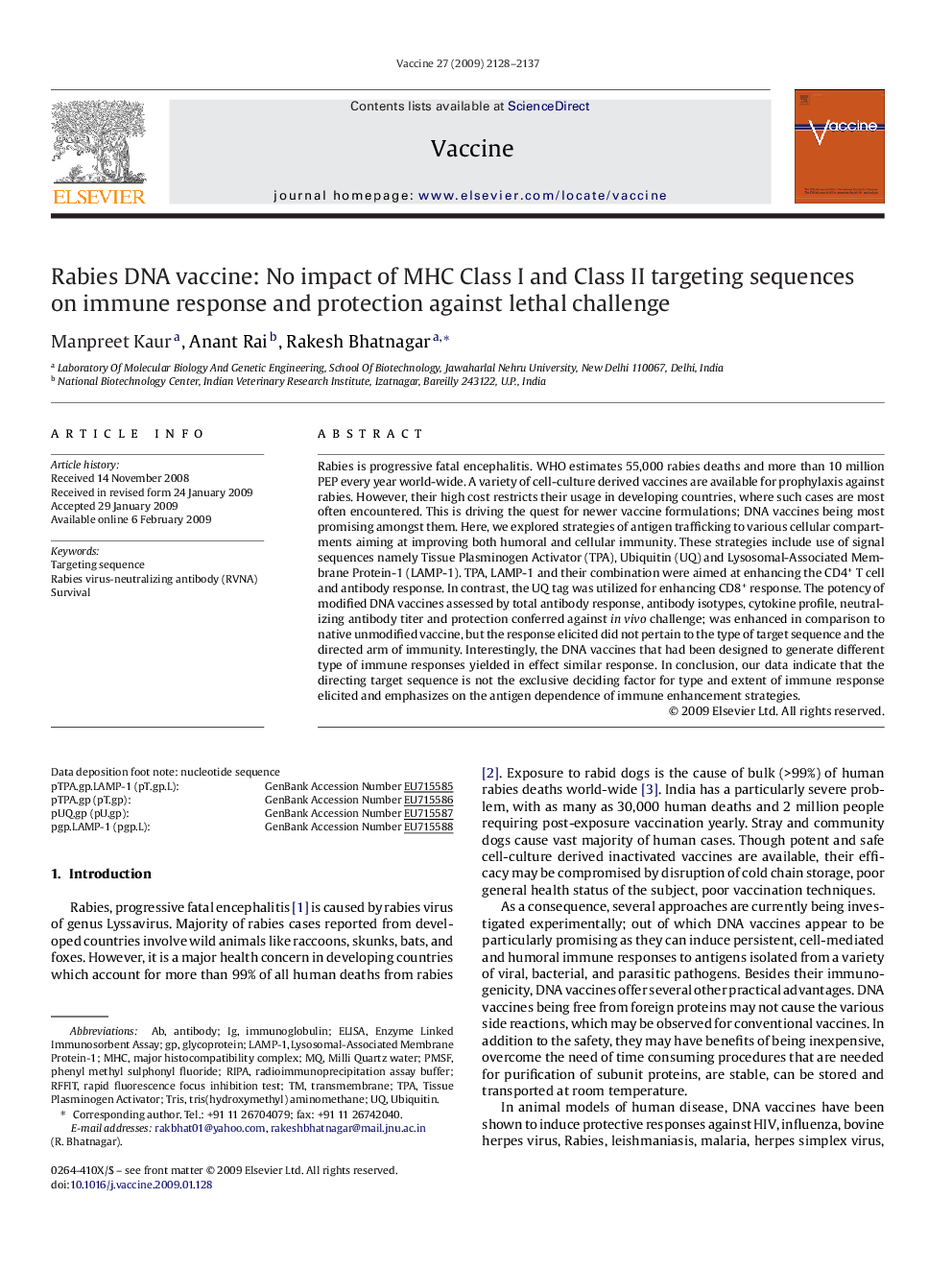| Article ID | Journal | Published Year | Pages | File Type |
|---|---|---|---|---|
| 2406490 | Vaccine | 2009 | 10 Pages |
Rabies is progressive fatal encephalitis. WHO estimates 55,000 rabies deaths and more than 10 million PEP every year world-wide. A variety of cell-culture derived vaccines are available for prophylaxis against rabies. However, their high cost restricts their usage in developing countries, where such cases are most often encountered. This is driving the quest for newer vaccine formulations; DNA vaccines being most promising amongst them. Here, we explored strategies of antigen trafficking to various cellular compartments aiming at improving both humoral and cellular immunity. These strategies include use of signal sequences namely Tissue Plasminogen Activator (TPA), Ubiquitin (UQ) and Lysosomal-Associated Membrane Protein-1 (LAMP-1). TPA, LAMP-1 and their combination were aimed at enhancing the CD4+ T cell and antibody response. In contrast, the UQ tag was utilized for enhancing CD8+ response. The potency of modified DNA vaccines assessed by total antibody response, antibody isotypes, cytokine profile, neutralizing antibody titer and protection conferred against in vivo challenge; was enhanced in comparison to native unmodified vaccine, but the response elicited did not pertain to the type of target sequence and the directed arm of immunity. Interestingly, the DNA vaccines that had been designed to generate different type of immune responses yielded in effect similar response. In conclusion, our data indicate that the directing target sequence is not the exclusive deciding factor for type and extent of immune response elicited and emphasizes on the antigen dependence of immune enhancement strategies.
